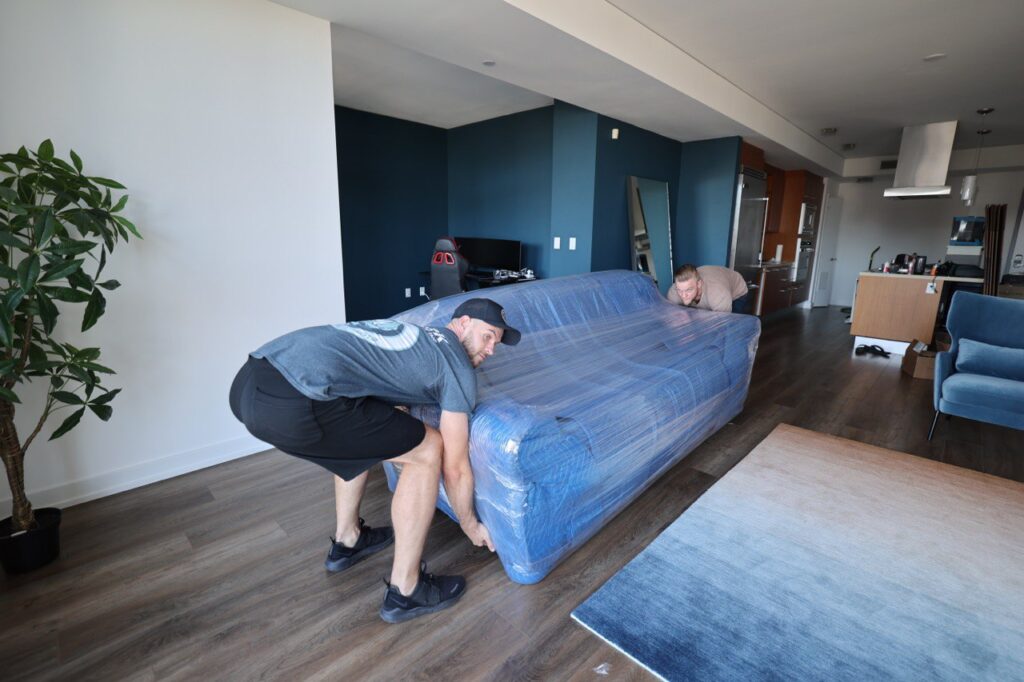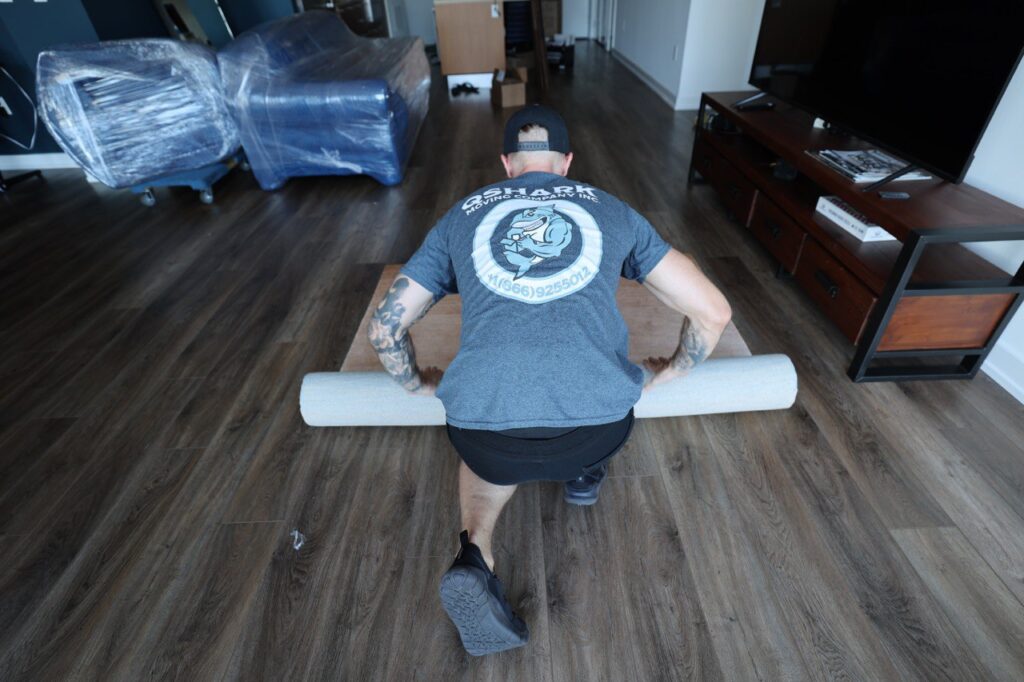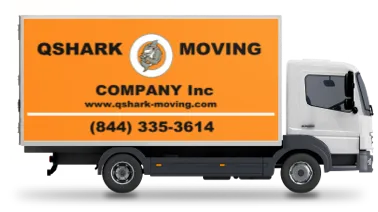
What Do Professional Movers Do?
Moving can be daunting and stressful, with countless variables to consider. Whether you’re contemplating a local move, or going a long distance, understanding the intricate steps that professional movers undertake can help alleviate some of that stress. This guide aims to walk you through the process from start to finish, giving you a comprehensive understanding of what to expect during a move. You will also learn what do professional movers do.
Why Use Professional Movers?
There are several compelling reasons to use professional movers like Qshark. While you could potentially move on your own, there are many advantages to bringing in the experts:
- Efficiency: With their experience, professional movers can pack, load, and unload your belongings more quickly than you could.
- Safety: Heavy items or awkward furniture can be dangerous to move. Movers are trained to handle these items safely.
- Reliability: Unlike friends or family, professional movers have a contractual obligation to show up and perform the job.
Types of Moving Services
Moving comes in many forms. It can be as simple as hiring day labor to help you move some furniture or as comprehensive as hiring a moving company to pack up your entire home, transport it, and then unpack at your new location. Here are some of the most common types of moving services:
Specialized moving services also exist for particularly large or delicate items, such as hiring piano movers.
Choosing the Best Movers
When choosing your movers, it’s essential to research and select the best fit for your needs. Consider factors like cost, services offered, and reviews from previous customers. It’s also crucial to verify that the company is licensed and insured. Some may be looking for cheap movers, while others may prioritize top movers or best movers for their move.
Local options also exist, such as Orange County Movers, Movers in San Diego, or Irvine Movers.
Remember, a move is more than just a transition from one place to another. It’s the start of a new chapter in your life. Understanding the process and the role of professional movers can make this transition smoother and less stressful. This guide will continue to explore the various steps involved in the moving process, offering detailed insights into what you can expect from a professional moving service.
II. Initial Consultation
The first step in the moving process is often the initial consultation. This stage sets the tone for your entire moving experience and is critical in ensuring a successful move.
First Contact with a Moving Company
Once you’ve decided to work with professional movers, your first interaction often involves reaching out to discuss your moving needs and gathering information. This could be through a phone call, email, or form submission on the moving company’s website.
During this initial contact, expect to answer questions about:
- The size and type of your move (Is it a local move or long-distance?)
- Your moving dates
- The size of your home
- Any particularly large or delicate items you might have, such as a piano
Estimating the Scope of the Move
This first interaction helps the moving company estimate the scope of your move, which is crucial for determining a rough estimate of the cost. Many companies, such as Qshark Moving, provide online tools to list household items. This ensures you get a more accurate quote and allows the movers to plan accordingly.
Scheduling the Moving Date
If you’re satisfied with the initial quote, the next step is to schedule the moving date. It’s important to book your move as far in advance as possible, particularly during the busy summer months or towards the end of the month when many leases typically end. The more flexibility you have with your moving date, the more likely you are to secure the services of your preferred movers.
III. Pre-Moving Survey
After scheduling your move, the next step is often a pre-moving survey. This can either be done virtually or through an in-person visit, depending on the company’s policy and your preference.
In-Home or Virtual Survey
A professional from the moving company will come to your home or conduct a virtual walkthrough. This survey aims to verify the information given during the initial consultation and further detail the inventory of items to be moved.
During the survey, be prepared to point out:
- All the items that you want to move
- Items that require special handling, such as artwork or fragile items
- Items that you will move yourself
- Items that will be discarded or sold
Providing an Estimate
Based on the survey, the moving company can provide a more accurate estimate of the cost of your move. This is also the time to discuss any additional services you might need, such as packing services or hiring day labor for any heavy lifting.

IV. Planning the Move
After the initial consultations and surveys, the next step is planning the move. In this phase, the moving company develops a strategy to ensure a smooth moving process.
Logistics of the Move
Movers create a detailed plan based on the information gathered during the survey. The plan will typically include:
- Inventory of items to be moved and their condition
- Required materials and equipment, such as boxes, dollies, and blankets
- Number of movers needed for the job
- Estimated time for packing, loading, transport, and unloading
Strategy for Packing and Transportation
Professional movers will devise a systematic strategy for packing your belongings to ensure that everything is packed safely and efficiently. They will take into consideration the best order to pack rooms, how to pack different types of items, and how to label boxes for easy unpacking.
Movers will plan the best way to load the truck for the transportation phase. This involves thinking about the weight and size of items and how fragile they are. Proper loading ensures that your belongings are safe during transit.
Contingency Plans
While movers always aim for a smooth move, sometimes unexpected events occur. Therefore, a good moving company always has contingency plans in place. This could involve alternative routes in case of traffic or road closures, additional packing materials for last-minute items, and plans for handling unexpected delays or changes in the weather.
V. Packing
Packing is one of the most labor-intensive parts of a move. It’s also one of the most important, as good packing is essential for protecting your belongings.
How Professional Packers Work
Professional packing services use tried-and-true methods to ensure your items are packed safely. Here’s what you can expect:
- They will provide all the necessary materials, including boxes, bubble wrap, packing paper, and tape.
- They will systematically go through each room, carefully wrapping and packing items.
- Delicate items, like china and glassware, will get extra attention and protection.
Special Methods for Packing Fragile Items
Fragile items need extra care. Professional movers use a variety of techniques to ensure these items are protected, such as:
- Using special boxes: Some items may require specialty boxes, such as wardrobe boxes for clothes, dish barrels for glassware, or crates for artwork.
- Using plenty of padding: Fragile items will be wrapped in bubble wrap or packing paper, and boxes will be filled with additional padding material to prevent movement during transport.
Labeling System
As they pack, movers will also label boxes with details about their contents and the room they belong to. This system makes unpacking easier and ensures that boxes are placed in the correct rooms during the unloading phase.
VI. Loading
Once your belongings are safely packed, loading them onto the moving truck is time. This process requires strength and careful planning to ensure that your items are loaded efficiently and safely.
Preparing the Home
Before loading begins, professional movers will often prepare your home to prevent any damage. This might involve:
- Putting down protective material on floors to prevent scuffs or scratches
- Covering door frames and stair railings with padding to protect against dings or dents
- Clearing pathways to ensure a safe and smooth move for the movers
Systematic Loading
Loading the truck is not as simple as it may seem. It’s not just about fitting everything inside; it’s also about ensuring that items won’t shift during transport. Here’s what you can expect:
- Heavier items and furniture are typically loaded first for balance.
- Boxes are then loaded, with the heaviest boxes placed at the bottom.
- Fragile or high-value items are often loaded last, so they are the first items unloaded at the new home.
- Large items such as furniture may be disassembled for easier transport.
Securing Items for Transport
The last step in the loading process is securing the items. Movers use straps and ropes to tie down items, ensuring they don’t move during transit. Blankets or moving pads may protect furniture from scratches or dents.
VII. Transportation
With your belongings safely loaded onto the truck, it’s time for the actual move. The transportation phase involves more than just driving from point A to point B – ensuring your items arrive safely and on time.
Route Planning
Before they hit the road, professional movers plan their routes. They consider factors like traffic patterns, road conditions, and the size of the moving truck when choosing the best route. For long-distance moves, they also plan for necessary breaks and overnight stops.
Driving the Moving Truck
Driving a fully-loaded moving truck requires skill and experience. Movers are trained to handle large vehicles and drive carefully to avoid damaging your belongings. They’re prepared to navigate everything from tight city streets to highways.
Communication During the Move
Good communication is key to a stress-free move. Your moving company should keep you updated during the transportation phase, letting you know when they’ve departed, giving you updates during the trip if it’s a long-distance move, and confirming their arrival time at your new home.
The next section discusses the unloading process and how movers transfer your items from the truck to your new home. This process involves heavy lifting and strategic placement of items to make the unpacking process easier.

VIII. Unloading
Upon arrival at your new home, the movers begin the unloading process. Much like loading, unloading requires careful planning to ensure that your items are moved into your home efficiently and safely.
Preparing the New Home
Just as they did in your old home, movers will take steps to protect your new home before they begin unloading. This might involve:
- Placing protective material on floors
- Padding door frames, stair railings, and tight corners
- Planning the best pathway through the home to accommodate large items
Systematic Unloading
Unloading typically begins with the last items that were loaded onto the truck. These are often fragile or high-value items placed last to be first off the truck for safety. The process then typically follows these steps:
- Large items and furniture are unloaded and placed in the appropriate rooms.
- Boxes are unloaded, with movers often placing them in the correct rooms based on their labels.
- Any items that were disassembled for the move are reassembled.
Final Walkthrough
After everything has been unloaded, the movers will typically do a final walkthrough with you. This is your opportunity to:
- Make sure all items have been unloaded from the truck
- Check the condition of your items
- Confirm that large items and furniture are in the right places
IX. Post-Move Services
While the bulk of the work is done once your items have been unloaded, most professional moving companies offer additional services to help you settle into your new home.
Unpacking Services
If you’ve opted for unpacking services, your movers will unpack boxes and dispose of all the packing materials. This can be a major time saver and help you settle into your new home more quickly.
Assembly Services
Some movers offer assembly services for items that were disassembled for the move. This might include furniture, beds, or even appliances. This is another service that can help you save time and reduce stress during your move.
Debris Removal
After the move, you might be left with a lot of empty boxes and packing materials. Some moving companies, like Qshark Moving, offer debris removal services to take care of this for you.
In the final section of this guide, we’ll provide some tips on settling into your new home after your move. While the physical moving process might be over, you can still do things to make your new house feel like home.
X. Settling In
The physical move might be over once the movers leave, but settling into your new home is a process. Here are some tips to help you transition and make your new house feel like home.
Organizing and Unpacking
You’ve likely already organized your belongings somewhat by having your movers place boxes in the rooms they belong to. Now it’s time to unpack and organize your belongings in your new space.
- Start by unpacking essentials: Unpack items you’ll need immediately first, like toiletries, basic kitchen items, and a few changes of clothes.
- Unpack one room at a time: This can make the process feel less overwhelming. You might want to start with common areas like the kitchen and living room.
Making It Feel Like Home
Once your items are unpacked, you can do some additional things to make your new house feel like home.
- Hang photos or artwork: This can instantly make a new place feel more familiar.
- Arrange furniture: Spend some time thinking about furniture arrangement. You might want to experiment with different layouts to see what works best.
- Add personal touches: Throw blankets, candles, or decorative items can make a new space feel cozy and personal.
Exploring Your New Neighborhood
Moving isn’t just about a new home – it’s also about a new neighborhood. Take some time to explore your new surroundings.
- Walk or drive around: This can help you get your bearings and discover local amenities like parks or restaurants.
- Meet the neighbors: If you’re comfortable doing so, introduce yourself to your neighbors. They might be able to offer helpful information about the area.
Moving is a major undertaking, but it can be a smooth and stress-free process with the right professional movers on your side. From the initial consultation to settling into your new home, each step is designed to ensure a successful move. Whether you’re moving across town or across the country, understanding what to expect can help you prepare for your move and settle into your new home more quickly.


